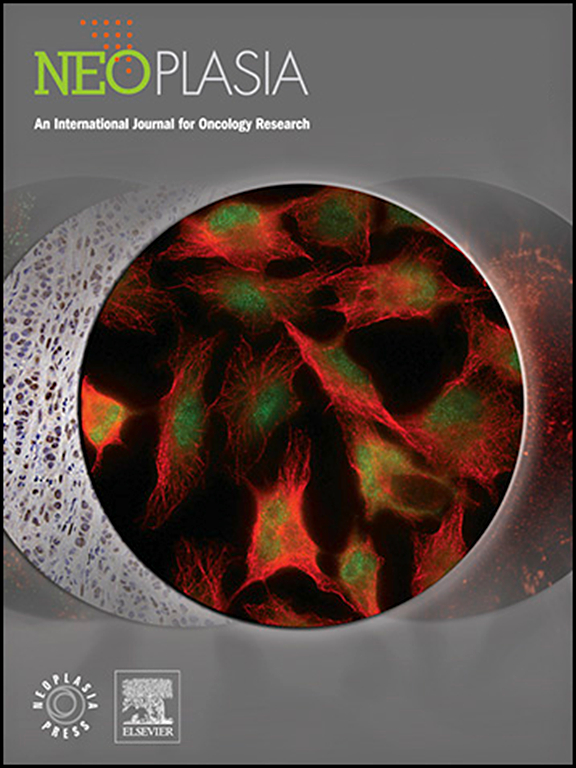Specifying the choice of EGFR-TKI based on brain metastatic status for advanced NSCLC with EGFR p.L861Q mutation
IF 4.8
2区 医学
Q1 Biochemistry, Genetics and Molecular Biology
引用次数: 0
Abstract
Background
In-depth insight into the genomic features of the uncommon EGFR p.L861Q mutant NSCLC is scarcely performed, and no consensus on the preferred treatment strategy has been established. Moreover, the therapeutic implications of EGFR-TKI stratified by clinical and molecular features remained largely unknown.
Methods
A multi-center NGS database comprising 44,993 NSCLC samples was utilized for the genomic landscape profiling of EGFR p.L861Q mutation. Furthermore, a real-world cohort of 207 patients harboring EGFR p.L861Q mutation with complete treatment history was curated for comprehensive clinical analysis.
Results
L861Q is prevalent in approximately 2.1% of EGFR-mutated NSCLC and is typically co-mutated with EGFR p.G719X on the same allele (20%) and exhibits co-occurrent EGFR copy number amplification in approximately 17% of cases. In the first-line setting, afatinib and third-generation EGFR-TKI have been shown to yield notably superior treatment outcomes compared to first-generation EGFR-TKI (1st vs.2nd vs.3rd generations, ORR: 15.8% vs.56.5% vs.46.7%, P=0.01; median PFS: 6.4 vs.13.5 vs.15.1 months, P=0.002). This finding consistently held for patients without CNS metastases (1st vs.2nd vs.3rd generations, median PFS:6.0 vs.18.2 vs.14.1 months, P=0.003). In contrast, third-generation EGFR-TKI demonstrated superior efficacy compared to afatinib or first-generation TKI among the subgroup of brain metastasis (Pooled 1st/2nd-generation vs.3rd-generation TKI, brain ORR:0.00% vs.33.33%; median PFS:7.9 vs.19.3 months, P=0.021). Additional concurrent EGFR mutations or EGFR amplification did not yield a discernible impact on the efficacy of EGFR-TKI.
Conclusions
The present study comprehensively elucidates the molecular features of EGFR p.L861Q mutation and underscores the optimal therapeutic choice of first-line EGFR-TKI based on brain metastatic status.
针对表皮生长因子受体 p.L861Q 突变的晚期 NSCLC,根据脑转移状态明确表皮生长因子受体-TKI 的选择。
背景:对不常见的表皮生长因子受体(EGFR)p.L861Q突变型NSCLC基因组特征的深入研究很少,对首选治疗策略尚未达成共识。此外,根据临床和分子特征对 EGFR-TKI 进行分层的治疗意义在很大程度上仍不为人所知:方法:多中心 NGS 数据库包含 44993 份 NSCLC 样本,用于 EGFR p.L861Q 突变的基因组图谱分析。此外,还对 207 例携带表皮生长因子受体 p.L861Q 突变且有完整治疗史的患者组成的真实世界队列进行了综合临床分析:L861Q在约2.1%的表皮生长因子受体突变的NSCLC中普遍存在,通常与表皮生长因子受体p.G719X在同一等位基因上共突变(20%),约17%的病例同时存在表皮生长因子受体拷贝数扩增。在一线治疗中,与第一代 EGFR-TKI 相比,阿法替尼和第三代 EGFR-TKI 的治疗效果显著优于第一代 EGFR-TKI(第一代与第二代与第三代相比,ORR:15.8% vs.56.5% vs.46.7%, P=0.01;中位 PFS:6.4 vs.13.5 vs.15.1 个月,P=0.002)。这一结果在没有中枢神经系统转移的患者中也一直存在(第一代与第二代与第三代相比,中位生存期:6.0 个月与 18.2 个月与 14.1 个月相比,P=0.003)。相比之下,在脑转移亚组中,第三代EGFR-TKI的疗效优于阿法替尼或第一代TKI(第1/2代与第3代TKI汇总,脑ORR:0.00% vs.33.33%; 中位PFS:7.9个月 vs.19.3 个月,P=0.021)。其他并发的表皮生长因子受体突变或表皮生长因子受体扩增对表皮生长因子受体TKI的疗效没有明显影响:本研究全面阐明了表皮生长因子受体(EGFR)p.L861Q突变的分子特征,并强调了基于脑转移状态的一线EGFR-TKI的最佳治疗选择。
本文章由计算机程序翻译,如有差异,请以英文原文为准。
求助全文
约1分钟内获得全文
求助全文
来源期刊

Neoplasia
医学-肿瘤学
CiteScore
9.20
自引率
2.10%
发文量
82
审稿时长
26 days
期刊介绍:
Neoplasia publishes the results of novel investigations in all areas of oncology research. The title Neoplasia was chosen to convey the journal’s breadth, which encompasses the traditional disciplines of cancer research as well as emerging fields and interdisciplinary investigations. Neoplasia is interested in studies describing new molecular and genetic findings relating to the neoplastic phenotype and in laboratory and clinical studies demonstrating creative applications of advances in the basic sciences to risk assessment, prognostic indications, detection, diagnosis, and treatment. In addition to regular Research Reports, Neoplasia also publishes Reviews and Meeting Reports. Neoplasia is committed to ensuring a thorough, fair, and rapid review and publication schedule to further its mission of serving both the scientific and clinical communities by disseminating important data and ideas in cancer research.
 求助内容:
求助内容: 应助结果提醒方式:
应助结果提醒方式:


